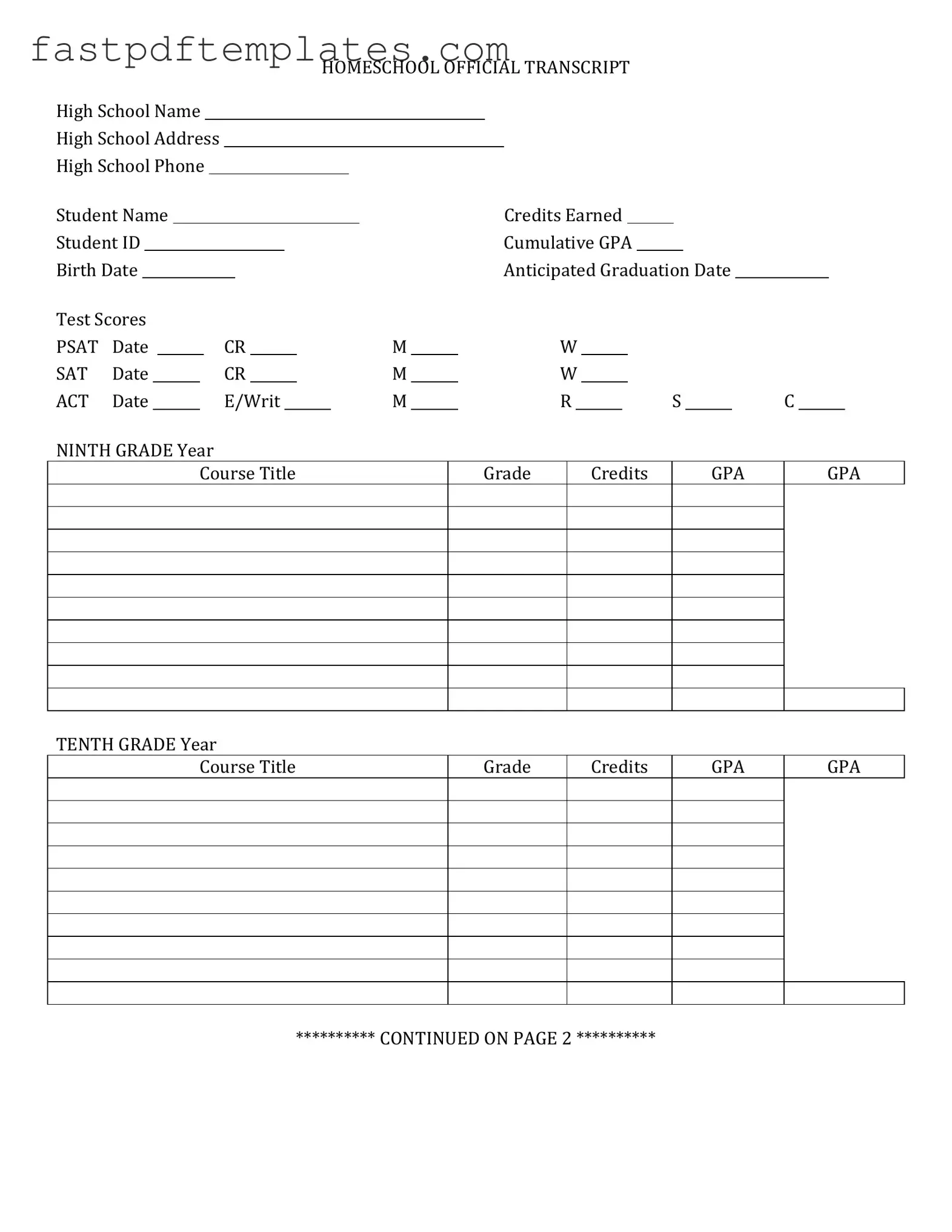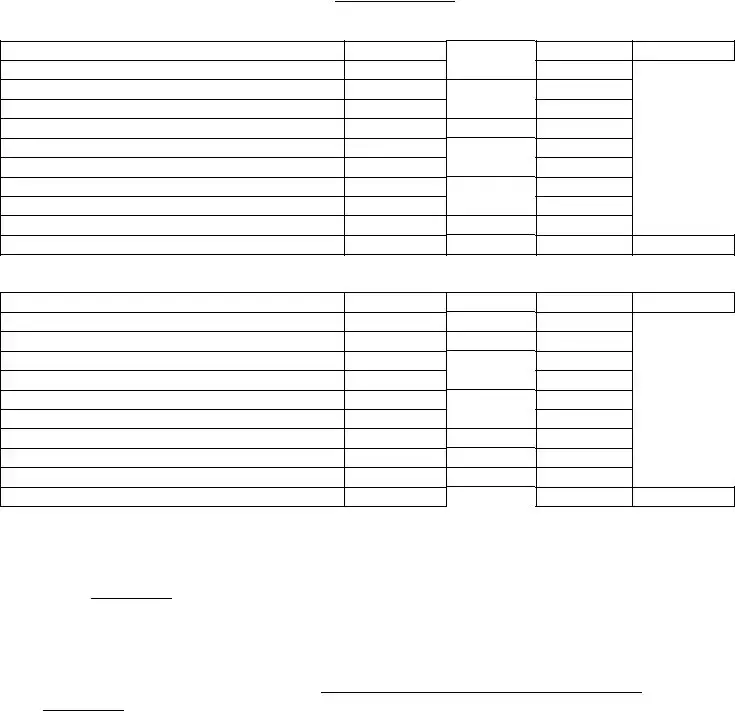The College Transcript is similar to the High School Transcript form in that it provides a detailed record of a student's academic performance. This document includes courses taken, grades received, and the overall GPA. Colleges and universities often require this transcript during the admissions process to assess a student's readiness for higher education. Like the high school version, it serves as an official record of academic achievements and is usually issued by the educational institution.
The GED Certificate serves a similar purpose to the High School Transcript, as it verifies that an individual has achieved a level of education equivalent to a high school diploma. This document is issued after passing a series of tests that cover basic skills in reading, writing, and mathematics. Just like a high school transcript, the GED Certificate can be used for job applications or further education, proving that the individual has met essential educational standards.
The Report Card is another document that resembles the High School Transcript. It provides a summary of a student's academic performance for a specific grading period, typically a semester or school year. Report cards include grades for individual subjects and may also feature teacher comments. While less comprehensive than a transcript, it still serves as an important record of a student's progress and can influence decisions regarding promotion or placement in advanced courses.
The Academic Record is akin to the High School Transcript as it compiles a student's entire educational history. This document may include information from multiple schools, detailing courses taken, grades, and credits earned. It serves as a comprehensive overview of a student's academic journey, much like a transcript, and is often required for college admissions or job applications.
The Diploma is another document closely related to the High School Transcript. It signifies the completion of high school education and is awarded upon graduation. While the transcript details the courses and grades that led to graduation, the diploma serves as proof of achievement. Both documents are often required for employment or further education, emphasizing the importance of a high school education.


